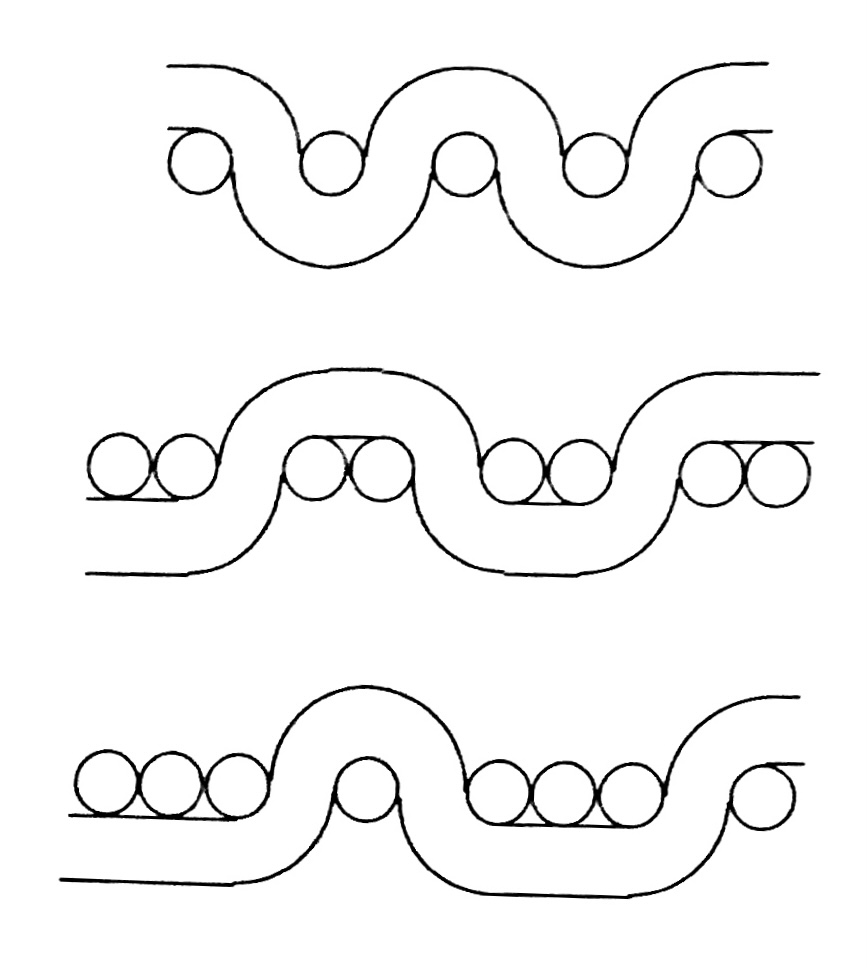
Folding Fabrics: The Basics
2021, TC-2 Jacquard Woven
Warp: Tencel
Weft: 20/2 cotton, silk, lurex, wool crepe, elastic silk, horsehair
While there are a number of ways to make fabrics take shape in a way that might resemble a pleat, such as modified forms of bedford cord weave structures, generally, these structures often take on softer structures. While one can create richly textured fabrics, these structures can fall flat from being able to produce pronounced folds which will spring back into shape after being deformed or flattened.
To create a more permanent and deformable folding structure, one needs to go further to be able to achieve the desired effect. When thinking in terms of static and dynamic yarns, there are a number of things that need to be taken into consideration.
The dynamic yarns need to exert force upon the crease lines such that they will fold in the desired direction (/--mountain, or /--valley), and they need to be kept from shrinking up/otherwise deforming the parts of the fabric we want to be flat.
The static yarns need to fulfull two functions. Firstly, they need to be flexible enough that they don’t interfere with the areas where the dynamic yarns are doing the folding. Inversely, they cannot be so easy for a static yarn to push around that there is puckering or shrinkage taking place in the flat sections.
The key is to find a balance between the forces of the static and dynamic yarns so that neither one overpowers the other on its own, and only when the weave structure allows for it.![]()
To create a more permanent and deformable folding structure, one needs to go further to be able to achieve the desired effect. When thinking in terms of static and dynamic yarns, there are a number of things that need to be taken into consideration.
The dynamic yarns need to exert force upon the crease lines such that they will fold in the desired direction (/--mountain, or /--valley), and they need to be kept from shrinking up/otherwise deforming the parts of the fabric we want to be flat.
The static yarns need to fulfull two functions. Firstly, they need to be flexible enough that they don’t interfere with the areas where the dynamic yarns are doing the folding. Inversely, they cannot be so easy for a static yarn to push around that there is puckering or shrinkage taking place in the flat sections.
The key is to find a balance between the forces of the static and dynamic yarns so that neither one overpowers the other on its own, and only when the weave structure allows for it.



To ensure the static yarn stays out of the way in the folding sections and stays neutral in the flat areas, this concept of warp:weft ratio (pictured above) affecting the way the weft yarn will tend to curl comes into play. In the flat sections, the static yarns sit in a 2/2 twill, and on the creases, either a 4/1 or 1/4 twill, depending upon the type of crease.
Meanwhile, the dynamic yarn floats over the entirety of folding sections. This allows for the elastic to be fully unrestrained by the warp, and lets it pull the fold into a sharp crease. Meanwhile, in the flat sections, the dynamic yarn is locked up by a plain weave, packing it as tightly as possible into the warp.

Lastly, a stabilizing weft--a horsehair yarn--is introduced every 12th pick. This is similar to the way that insect wings use rigid “panes” to support and keep taught the much more fragile, membrous part of the wing. The horsehair weft running horizontally to the dynamic yarn helps ensure further that the flat areas stay flat.

